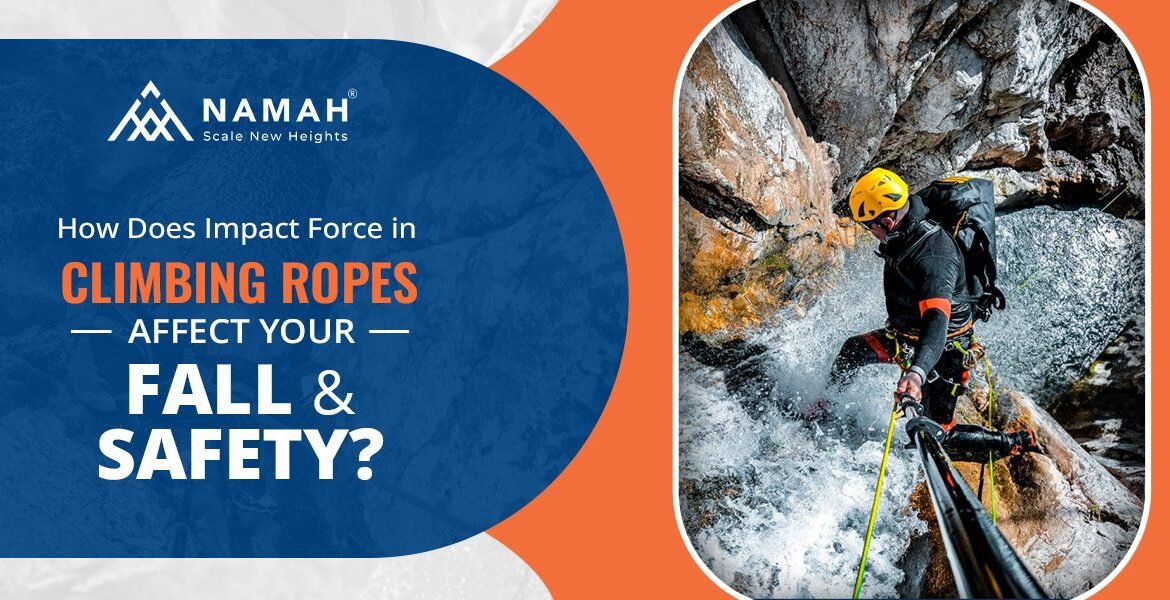Climbing is an exhilarating sport, but safety should always come first. One of the most critical aspects of climbing safety is impact force, which determines how much stress your body, belayer, and anchor system experience when a fall is caught by the rope.
A well-designed climbing rope does more than just stop your fall it absorbs and distributes the force to minimize impact, reduce the risk of injury, and extend the lifespan of your gear. Understanding how impact force works, what affects it, and how to reduce it can make a huge difference in your climbing experience.
1. Understanding Impact Force in Climbing
Impact force refers to the amount of force exerted on a climber, their belayer, and the anchor system when the rope stops a fall. A high impact force can lead to greater stress on the climber’s body, excessive strain on gear, and a harsher catch, making falls feel more jarring.
The ideal climbing rope is designed to reduce impact force by stretching slightly, which absorbs the energy of the fall more efficiently. This creates a softer, more controlled catch, minimizing shock on the body and equipment.
2. Key Factors That Affect Impact Force
Rope Type: Dynamic vs. Static
Not all ropes are designed to absorb falls. Dynamic ropes are built to stretch, reducing impact force and making falls safer. In contrast, static ropes have little to no stretch and should never be used for lead climbing, as they do not absorb energy effectively.
Rope Diameter & Elasticity
Thicker ropes (9.8mm-10.5mm) offer more durability but generally have higher impact forces due to less stretch. Thinner ropes (8.5mm-9.5mm) stretch more, reducing impact force and making falls feel gentler. If you take frequent lead falls, a thinner dynamic rope will often provide a better fall experience.
Belay Device & Catch Technique
Belay devices play a significant role in how impact force is managed. Tube-style belay devices (such as ATCs) provide more stopping power but can lead to a harsher catch. Assisted-braking devices (like GRIGRI or Revo) allow for slight rope slip, which reduces impact force and makes the fall feel softer.
A soft catch, where the belayer moves slightly with the fall, helps reduce impact force by extending the stopping distance. Proper belay technique ensures that falls feel safer and less intimidating.
Climber & Belayer Weight Difference
If a lighter belayer is catching a heavier climber, greater impact forces can occur. To reduce impact force in these cases, the belayer should stand closer to the wall to avoid being pulled in, use a ground anchor or weight bag for stability, and practice dynamic belaying techniques to provide a softer catch.
3. How to Choose the Right Rope to Reduce Impact Force
If minimizing impact force is a priority, it’s essential to choose the right rope. UIAA-certified dynamic ropes meet safety standards for fall absorption and should always be used for climbing. When selecting a rope, look for one with a low impact force rating (measured in kilonewtons, or kN), as this means the rope absorbs more force and provides a softer catch.
Ropes with higher elongation properties typically around 30% stretch are ideal for sport climbing, trad climbing, and multipitch routes where a softer fall is beneficial. Opting for a longer rope also helps distribute force more effectively, ensuring a smoother fall arrest.
4. Why Impact Force Matters for Every Climber
Falling is a part of climbing, but how you experience that fall depends on your rope choice, the amount of rope in play, and your belayer’s technique. A well-chosen rope and a knowledgeable belayer can make all the difference between a hard, jarring fall and a controlled, comfortable catch.
Managing impact force is not just about comfort it directly affects safety, injury prevention, and the longevity of your climbing gear. A softer catch reduces strain on both the climber and the system, making repeated falls less damaging over time.
5. Final Thoughts & Key Takeaways
Understanding impact force helps climbers:
Choose the right rope for their climbing style.
Improve belaying techniques to provide softer catches.
Reduce injury risk by managing fall dynamics properly.
Next time you’re selecting a rope, don’t just focus on durability or weight check impact force ratings too. A rope with lower impact force will make your falls safer and more comfortable, improving your overall climbing experience.




